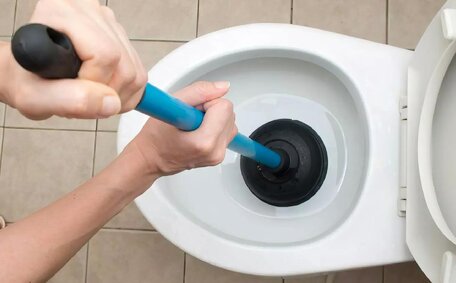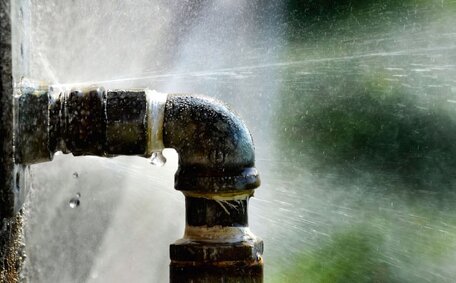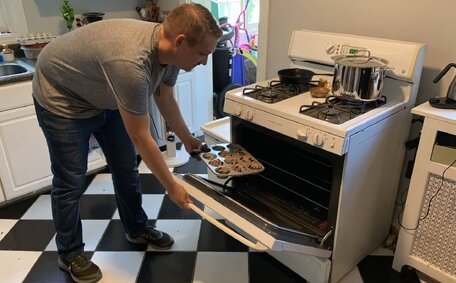Introduction to Pipe Relining vs Traditional Replacement
Regular inspections help prevent pipe corrosion that causes leaks, blockages, and the catastrophic bursting of pipes. Homeowners with damaged pipes must decide to either reline or replace them. Evaluating the effectiveness of pipe relining is essential as it offers a distinct set of advantages and drawbacks in terms of invasiveness, quality, and cost when compared to traditional pipe replacement.
Drain relining uses a flexible epoxy resin liner to form a new 'pipe within a pipe’, avoiding the need for trenches.
The liner adheres to the inner walls, transforming damaged pipes into robust conduits with a smooth interior, enhancing water flow and preventing leaks. Relining benefits various pipe types, including copper, galvanised steel, clay, and concrete, without excavation or disruption.
At Brighton-Le-Sands Plumbing, located in the Inner West, our expertise lies in Sydney pipe relining and repairing cracked or broken pipes, helping residents decide between relining and complete repairs. In this article, we’ll analyse key factors like longevity, pricing, risks and more so you can make an informed decision.
Understanding the Pipe Relining Process Step-by-Step
The pipe relining process creates a durable new pipe within the old one, providing protection and remediation without risking damage to your property’s structural integrity:
- Initial CCTV pipe inspection - A camera detects the exact location and extent of pipe damage and identifies any debris, blockages, or tree roots.
- Pipe cleaning and preparation - We resolve existing issues, thoroughly cleaning the pipe and preparing it for relining.
- Measuring and custom liner fabrication - Precise measurements are secured and a tailored liner is fashioned, coated with resin to integrate seamlessly within your cracked or broken pipes.
- Liner installation - The liner is coated with a special resin and inserted into your pipes using air pressure. It immediately bonds and hardens, then is cured in place using hot techniques, moulding a new, strong pipe wall inside.
- Curing using hot water steam - Hot water steam is propelled inside the old pipe to cure and shape the new lining, fitting it within the existing pipe framework.
- Final CCTV inspection - A conclusive camera sweep of your drain guarantees a flawless installation and the absence of other concerns.
The Pipe relining process is minimally invasive, with there no requirement for digging up your yard. Furthermore, the 1-3 day installation process causes minimal disruption to your home or property. Our skilled team guides you through every stage, from inspecting the old pipe to the final renovation touches.
Materials Used in Pipe Relining
Pipe relining refreshes your plumbing with no excavation, using epoxy resin for a seamless new lining. Epoxy resins are potent and pliable materials used to coat fabric liners, which then shape and seal up any holes fitting snugly within the structure of existing pipes.
When amalgamated with hardening agents, epoxies constitute durable lining for pipes, drains included, resisting corrosion and ensuring a robust bond to the existing pipe walls. The epoxy resins culminate their no dig transition from a fluid state to a solid one, affirming superior strength and steadfast reliability. Familiar curing approaches involve subjecting the epoxy liner to circumstances that ensure it is cured in place.
This lining material is flexible enough to navigate bends and pass through access points, lining the full length of the pipe. Once fully cured, the epoxy exhibits compression strength comparable to concrete, removing the need for excavation. This robustness allows a durable pipe within existing infrastructure to withstand the everyday pressures in the plumbing system.
Depending on the project, other materials such as polyurethanes, glass reinforcement, and acrylics may be used. Overall, epoxy resins tick all the boxes in terms of formability, durability, and corrosion resistance to deliver reliable long-term pipe repairs.
Measuring and Preparing the Damaged Pipe
Precise dimensioning and readying of the impaired section takes away worry about the reliability of relining solutions. Technicians use CCTV cameras to identify corrosion, cracks, holes, and other irregularities in damaged pipes.
We meticulously measure the length and diameter of the pipe area where repairs can be carried out, noting any changes in dimension or direction. This precision ensures blocked drains are equipped with a custom-fit epoxy resin liner that can be comfortably accommodated.
The pipe section is then vigorously cleaned using high-pressure water jets. Any debris, deposits, tree roots or other obstructions are cleared to create a smooth base for the liner to adhere to. The prepared surface enhances bonding and curing during the relining process for optimal strength and durability.
Thorough measurements and cleaning ensure the elimination of any debris blockages and reduce the uncertainties of potential future failures due to poor liner fitting. Our expertise streamlines this vital stage of pipe remediation prior to inserting and curing the new epoxy lining.
Inserting and Curing the New Pipe Lining
After the damaged pipe section is thoroughly cleaned and prepared, we introduce the custom-built epoxy resin liner, a critical phase demonstrating the efficacy of pipe relining. Our technicians meticulously ensure the liner is coated with resin before inverting it into the pipe using air pressure.
There’s no gap left uncovered as the new lining expands to adhere to the inside old pipe walls. As it’s subjected to heat, the resin activates and then hardens, essentially creating a new durable pipe in place using hot water as the catalyst. Temperatures typically reach 60-80°C, setting ideal conditions for the liner to cure in place, facilitating bonding and ensuring solidification.
Within 1-3 hours, the adaptable liner metamorphoses and forms a new, robust, continuous pipe that adheres firmly within the old pipe, capably tackling any problems in your plumbing system. We perform a final CCTV inspection to confirm the high quality of the installation, ensuring relining your home’s drains are set for optimal performance before reinitiating water or sewer services.
The curing process securely fixes the liner to bends, fittings, or branches in the piping system.
Our expert insertion and curing process ensures robust relining, potentially saving you from expensive full pipe replacements. In most cases, the relining returns your plumbing system to full functionality for decades to come.
Advantages of Pipe Relining Over Replacement
The benefits pipe relining offers include key advantages when juxtaposed with full pipe replacement, chiefly as the process is executed using techniques that obviate the need for extensive digging:
- Less invasive – No need to dig trenches or jackhammer floors as access is through small entry points.
- Faster – Pipe relining takes 1-3 days, a significantly shorter timeframe than pipe replacement, which can take weeks.
- Cost effective – Average savings of 50% over replacement.
- Minimises disruption – Little restoration needed for floors, walls, landscaping.
- Long lasting – Epoxy liners have a 50+ year design life.
- High adaptability – Can be introduced into damaged pipe structures in kitchen, bathroom, laundry and sewer systems.
Inserting a tough, flexible epoxy-coated liner into existing pipes halts leaks and corrosion, avoiding the mess and expense of full pipe removal. This trenchless method allows us to remediate pipe damage with minimal impact to your home or property.
Pipe Relining vs Replacement - Cost Comparison
When deliberating between pipe relining and complete replacement, sometimes a cost-efficient method such as pipe patching also factors into homeowner decisions. At a high level, there’s no denying that relining offers average savings of 50% compared to replacement.
This is due to several key reasons:
- Minimal excavation and restoration - No need to dig trenches or repair floors/walls after access.
- Faster completion - 1-3 days instead of weeks, reducing labour costs.
- Versatile applications - Sewer pipe relining is highly effective, alongside tasks like drain maintenance, kitchen repairs and bathroom refurbishments.
Pipe replacement often involves significant destruction to access underground or hidden pipes. This necessitates not only removing the pipes themselves but also repairing the surrounding structures once finished.
Excavating pipes often requires replacing tiles, concrete, landscaping, and furnishings, which adds to the cost and hassle. The costs of materials and skilled tradesmen for these restoration tasks is high.
In contrast, pipe relining accesses pipes via small external entry points that cause little surface damage or need for restoration. By remediating damage from inside your existing pipes, we avoid thousands spent on returning surrounding aesthetic or structural elements back to their original state.
In numerous households, relining delivers enduring integrity for water pipes within the old one, with results persisting for fifty years or more, far more cost-effective than replacement. Call us today to get your specific pipe relining cost savings for your property.
Assessing Longevity and Guarantees
Pipe relining offers exceptional longevity compared to replacement. Our pipe relining made with epoxy resin liners come with an industry-leading 35-year guarantee against material defects or installation failures.
Contrastingly, new PVC pipe installations usually come with 10-15 year warranties. Relined pipes, properly maintained, are designed to last at least half a century, eliminating concerns about their longevity.
The high-quality assurance originates from expert fabrication and installation of the custom-fitted liner within existing pipes. Set curing times and controlled conditions, especially place using hot temperatures, ensure thorough hardening and bonding to restore structural integrity.
Homeowners can have peace of mind, knowing their plumbing system is restored from the inside out with minimal ongoing risk. Ring us up to understand warranty terms or for annual pipe inspections to proactively verify relining outcomes.
Risks and Limitations of Pipe Relining
Although pipe relining presents a minimally invasive and cost-effective alternative to complete replacement, there are some limitations and risks associated with potential damage pipe relining might cause, to be cognisant of:
- Pipes that are severely damaged, collapsed, or misshapen may not be viable for relining if the liner cannot securely adhere.
- If existing access points are unable to reach the full pipe length, excavation at additional points may still be needed.
- Complicated pipe routes with multiple bends can complicate liner insertion and curing.
- Liner bonding issues or resin curing failures can occur if processes are rushed or not properly monitored.
- Tree roots or leftover debris can eventually penetrate or obstruct the inserted liner over time.
Our skilled technicians meticulously follow each step in the pipe relining process, from thorough pipe inspection and preparation to custom liner fabrication and post-curing quality assurance. However, no solution is foolproof.
We stay devoted to our craft, assuring that repairs can carry out the highest quality standards, furnishing guarantees, and recommending maintenance plans for consistent pipeline monitoring. Contact us to discuss the specifics of your project.
When Should I Choose Pipe Replacement?
In specific circumstances, a complete pipe replacement might be more suitable long-term for issues like a severely blocked drain than a simple reline:
- If a broken pipe is severely damaged, collapsed, or deteriorated, it may not offer enough structural integrity for the liner to adhere properly.
- If angles, bends, or blockages impede liner access throughout the pipe, some excavation may be necessary.
- Asbestos cement pipes need removal for hazardous material reasons, making relining unfeasible.
- If relining fails and needs redoing, replacement may become the more practical and foolproof choice.
Our specialists perform detailed pipe inspections and provide honest advice on whether relining or full replacement is more suitable.
Although relining avoids the upheaval of excavation, there are cases where pipe replacement offers more benefits in the long run. Contact us for an assessment tailored to your unique situation.
Professional Assessment for Optimal Solution
Determining whether to consider pipe relining or full replacement is best for your situation requires an expert assessment by a qualified plumber. Here at Brighton-Le-Sands Plumbing, your choice for plumbing excellence, our team has extensive experience inspecting and repairing residential and commercial plumbing across Sydney.
We conduct thorough evaluations with no stone left unturned, including checking that the liner coated resin properly during pipe camera inspections to gauge the extent of corrosion, leaks, cracks or other damage. We measure key factors like remaining structural integrity, number of bends, pipe composition, and accessibility issues.
By comparing issues in each section pipe against industry standards and manufacturers’ guidelines for relining suitability, we offer straightforward advice on the most effective course of action.
In some cases relining is clearly preferred, while other situations demand full pipe replacement as the only feasible long-term solution. We take great pride providing honest and accurate recommendations to give you peace of mind.
Send through your enquiry right at your convenience to Brighton-Le-Sands Plumbing today to arrange a professional evaluation to right your plumbing needs. Right at your call, we cater to the specific challenges faced by your plumbing system, highlighting convenience and cost-effectiveness through flexible payment schemes.
Conclusion - Is Pipe Relining the Right Choice?
Pipe relining provides a minimally invasive and cost-effective repair solution for damaged pipes in many situations. As discussed in this article, modern pipe relining technology allows the used pipe relining method by inserting a tough epoxy liner within old pipes to essentially create a 'pipe within a pipe’.
For materials like copper pipe, galvanised steel, clay or concrete that have become corroded, cracked or leaky over time, relining provides an efficient repair method without needing to dig up pipes and cause major disruption. The seamless epoxy barrier stops further deterioration, restores flow capacity, and provides exceptional durability for decades.
While relining has limitations depending on the extent of damage, our experts at Brighton-Le-Sands Plumbing provide honest assessments on whether your pipes are suitable candidates. We also offer reliable installation and quality assurance backed by industry-leading 35-year guarantees.
When comparing pipe relining vs pipe replacement, the key benefits include a list of advantages that ensure a non-invasive and cost-effective solution:
- Less invasive – Access via small exterior points eliminates digging.
- Quick 1-3 day completion causes minimal property disruption.
- Average 50% cost savings over full replacement.
- 50+ year durable epoxy liner lifespan.
For a professional consultation on repairing your home or business pipes in the Brighton-Le-Sands area, email or call the pipe relining specialists at Brighton-Le-Sands Plumbing today.






